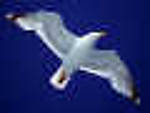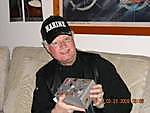First I worked on the wing fit issues. I sanded back the areas where the wing parts are too thick and marked them with a Sharpie so they'd show up in the pictures. The two arrows mark where the wing joins the rear fuselage wing fairing. I had to notch them pretty severely in order to make the trailing edge fit with a nice sharp edge. The wingtip area that Stephen noted in his review needed some very careful shaving down to avoid a step. Then it needed shimming to close the gap that remained after the blobbiness was sanded down. This area is a definite issue for anyone building this kit.

While the wings were gluing, I worked on preparing the fuselage halves. I sanded each as though it was a vacuform kit, and just like a vac kit I added tabs cut from plastic card to help keep the fuselage tgether and increase the gluing surface. Once again the black Sharpie marks where I sanded to improve the fit. I goofed with that strip at the front of the wing cutout. I forgot that Roden moulded a bulkhead into the front of the lower wing half to maintain the dihedral angle. Look, you can see it in the pictures above and below this one. When it came time to test fit the wing to the fuselage, I had to rip that strip out. Note to self: Don't bother with that next time.

Back at the wing, we can see that the #4 nacelle is slightly out of round. I'll have to add a shim to the outside and then carefully sand it back to circular.

There's something missing! Top is the Roden fuselage, bottom is a Minicraft DC-6. Note that Minicraft remembered that the nosewheel leg needs something to glue into. There's nothing there in the Roden kit and if one were to simply glue the nose leg onto the top of the wheel well, the finished kit would sit extremely nose down. I'll have to come up with a scratchbuilt mount.

And here it is. I used a section of a cotton swap with a hollow plastic handle which was sitting on my workbench. I suppose I could have just as easily used a piece of styrene tube and avoided all the messing about with superglue and accelerator but if it's stupid and it works, it's not stupid anymore. I will have to extend the retraction strut because if I glue it on the way it is, the upper end will be floating in midair inside the nosewheel bay.

I don't like my kits to tailsit so I mixed up a nice big lump of Milput and stuck in a handful of finishing mails that I had kicking about in my desk drawer. This one's never going to tip back.

Now the fuselage is closed. I will leave these two subassemblies on the workbench to cure overnight.











































































































